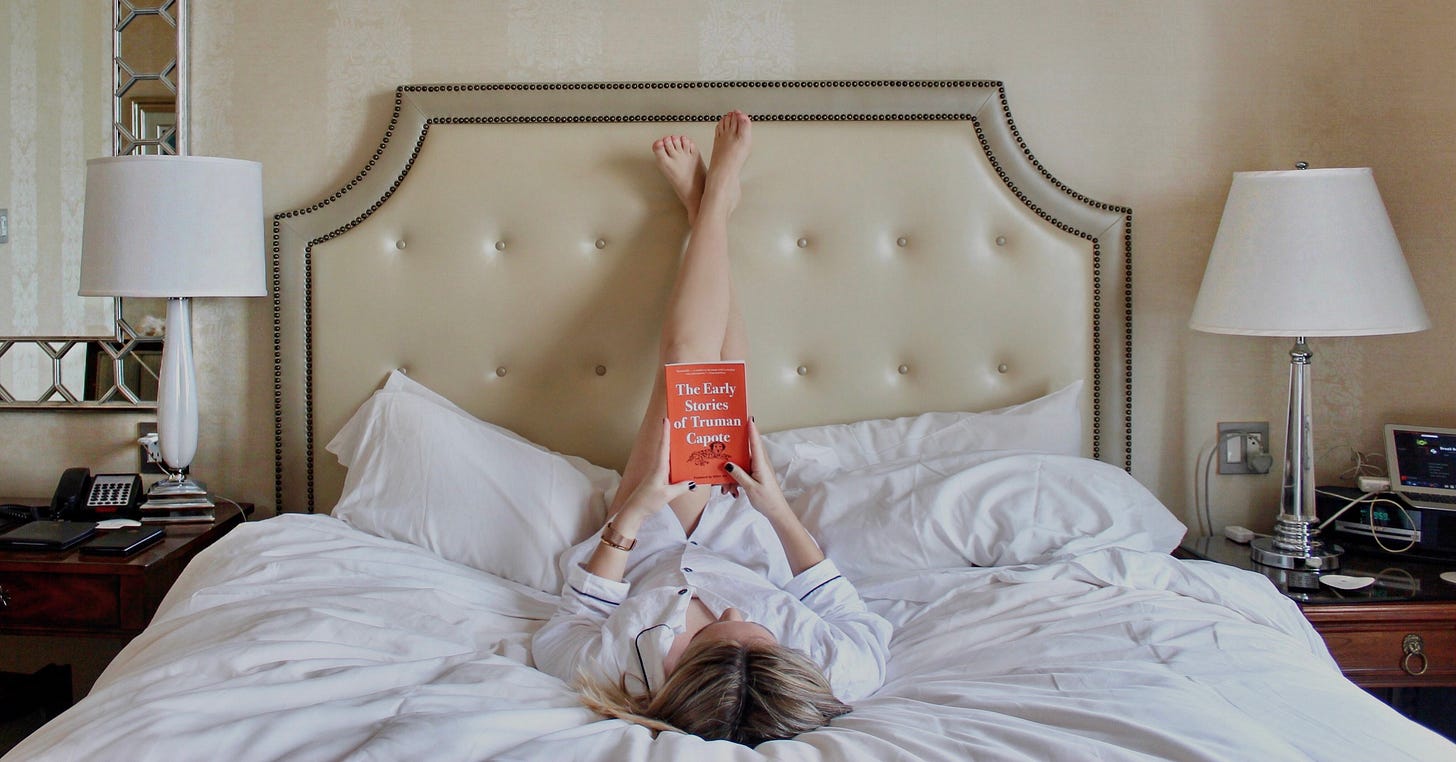Love Letters from My Younger Self: The Memory Lives in the Skin.
Decoding a summer afternoon as more than nostalgia: undiagnosed ADHD, the body’s memory, and how stillness reveals what the mind resists.
Author’s Note
This entry came from a day that looked like peace from the outside, but inside, I was parsing something I couldn’t quite name. All I had was a physical stillness and a mental spin cycle. My body felt grounded, warm sun, soft air, nothing to fix, but internally, something was off. I didn’t have a framework for it. I just knew I felt slightly outside myself, like I was watching my thoughts from a few feet back, trying to catch up to their logic.
What I now understand is that I was experiencing the sensory fragmentation and time distortion that often comes with undiagnosed ADHD. But at the time, it felt like a glitch. Or worse, like a personal failing. I was trying to be present. I was doing nothing, and yet my mind was working overtime to find meaning in it all. The heat, the light, the smell of sunscreen, everything was a portal. I kept slipping through.
Reading this letter now, I see how much effort I put into feeling normal. Into narrating a moment that didn’t make sense internally, but needed to be archived anyway.
This wasn’t daydreaming. It was a real-time attempt to regulate my own experience, without knowing that was what I was doing.
If you’ve ever found yourself over-analysing a calm moment, or trying to decipher an emotion that seems unearned or untimed, this might feel familiar.
This letter isn’t about introspection.
It’s about making contact with the self, when the self is a moving target.
Then: Age 20-something, writing from a moment that didn't ask for attention, but kept it
The afternoon was uneventful. The kind of summer day that lets you forget where you are until the sun settles differently on your skin. I remember the scent of sunscreen more vividly than anything else, a sharp, nostalgic trigger that pulled me into a memory I didn’t invite but welcomed anyway. A beach, somewhere in the past. Unsteady waves coming in and out. Not rhythmic, more uncertain. Like my thoughts.
I was present, technically. Lying there. Breathing. Watching the light shift. But mentally, I was moving through layers, past, present, something imagined. My body was grounded in the now, but my perception was sliding elsewhere. It wasn’t disassociation. It was observation, me watching myself watch something I had once lived.
A low hum of restlessness showed up like static. Not enough to jolt me, just enough to make me question the architecture of time. Why are we so obsessed with dividing it up? Past, present, future, as if they exist separately, without overlap or echo. As if we could ever extract ourselves from them cleanly.
The months that led to this moment had been muted. Not in a dramatic way, just flat. A stretch of time spent trying to fix something I couldn’t reach. A slow erosion of control. I had stopped expecting resolution and started rehearsing detachment. But of course, detachment never really works. Our bodies always know the truth. They remember before we do.
At some point that day, I imagined myself in a white museum. Barefoot, in a long red dress. The floor cold, the space immaculate. I don’t know why that image came to me, but it stayed. I moved through it like a dream, still, but not stuck. Alive, but untethered. The kind of internal vision you don’t need to explain. You just recognise it.
Looking back, I know what it was: a visualisation of weightlessness. Of clarity. Of feeling every sensation without needing to reduce it to meaning. For a moment, I wasn’t trying to process or heal or move forward. I was just letting myself feel the present without fleeing it.
We like to think that burning the cards, deleting the photos, scrubbing the data, erases something. But erasure is a myth. What’s remembered in the body can’t be undone. The heat always lingers. What we call healing is often just learning how to live with what already exists, with more grace, with less resistance.
Now: Age 38, understanding that time doesn’t pass, it returns
Back then, I thought I was just feeling too much. Now I know I was processing without a name for it. What I described as reflection was really executive dysfunction disguised as introspection, a brain trying to organise something that refused to land in sequence.
The emotional dissonance I felt, the mismatch between external calm and internal turbulence, is something I now recognise as a hallmark of ADHD. Especially in women. Especially when undiagnosed.
That day gave me a glimpse of how memory actually works when you live in a nonlinear body. It’s not chronological. It’s experiential. You don’t remember back. You remember through. Something smells like 2012. A sound unravels your twenties. A gesture drops you into the middle of an unfinished sentence from five years ago.
What I’ve learned is that you can’t intellectualise your way out of the body. You can’t theorise your way into healing. You have to let the memory arrive. Let the heat rise. Let the moment live.
Not everything needs to be sorted. Some things just need to be felt in full.
If you’ve ever spent a quiet day questioning why you feel unsettled, if you’ve ever tried to decode your own emotions like they were someone else’s handwriting, this letter is for you, too.
You weren’t making it up.
You were making sense of it.
And you’re not late. You’re right on time.
Marie x


